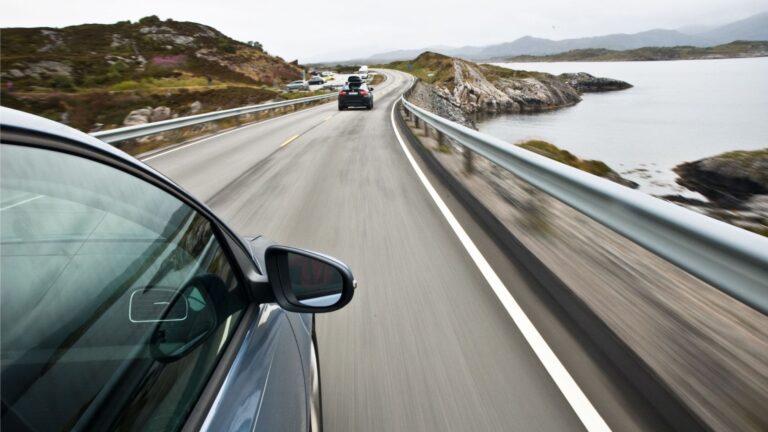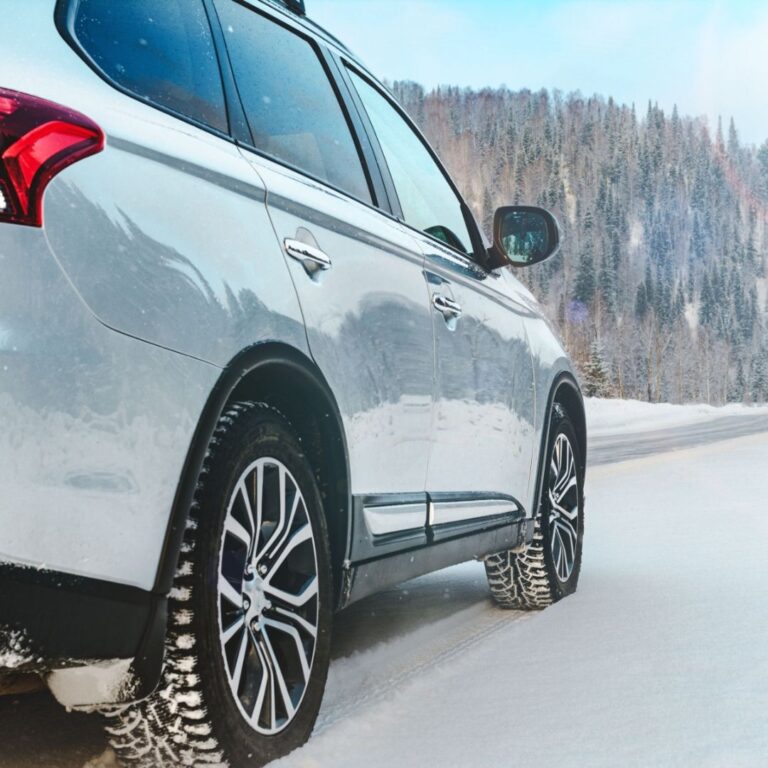Moving to Norway with a car is complicated. Here are the rules and regulations you need about, especially the tax implications.
Norway has some of the world’s most scenic roads, offering not only breathtaking views but also a thrilling driving experience. Bringing your own car to Norway to experience these thrills is easier said than done, however, given the country’s strict rules.

Those rules on car ownership make buying a car in Norway a very expensive affair. It can therefore feel very tempting to import a car from abroad, but buyer beware: the road to importing a car in Norway is fraught with unexpected detours and toll booths.
So, whether you’re bringing your car to Norway temporarily or permanently, let us guide you through the mazes of custom regulations and Norway’s unique road tax system.
Buckle up, adjust your rearview mirrors and get your credit card ready, because it’s gonna cost you!
A history of high road taxes in Norway
While the post-war period in America led to an unprecedented boom in car ownership, the story was quite different in Norway. Due to the necessity of allocating resources to rebuilding after the occupation, private car ownership was rationed until 1960.
This rationing period led to cars being considered a luxury in Norway. This perception has changed: cars are now considered a basic necessity in the country, unless you live in one of the bigger cities.
But the historical context of car scarcity and luxury taxation has contributed to higher costs for purchasing a car than in many other countries.

The exception in recent years has been electric cars, which are exempt of many of the fees imposed on their fossil-fuelled predecessors. This led to comparatively lower prices and a high adoption rate for battery-powered vehicles.
Bringing your car to Norway as a tourist
First, let’s get the basics out of the way: driving your car in Norway as a tourist (up to 90 days on a typical tourist visa) should pose no major problems, but there are a few considerations to keep in mind.
First, make sure that your driver’s license is recognised by Norwegian authorities.
Next, make sure your car is roadworthy. Assuming you are coming from another European country, this means having your EU inspection documentation in order.
Keep in mind also that it is mandatory to carry a red warning triangle and a yellow fluorescent visibility vest in the car in case of breakdowns or accidents. Last but not least, please, for the love of everything you value, equip your car with tyres that are appropriate for the conditions.
This means that if you are planning a winter road trip to Norway, you need winter tyres. Driving in winter conditions with summer tyres amounts to a death wish.
Winter tyres are not mandatory, strictly speaking, but drivers are obligated to have tyres that are adapted to the driving conditions. Not complying with this rule and being involved in an accident can result in charges of gross negligence.
Bringing your car to Norway as a temporary resident
If you're planning to hang out in Norway for up to a year, you're in luck. You can drive your foreign-registered car just about as easily as if you were a tourist.
A crucial condition is that you need to be able to provide proof that your stay won’t exceed a year from the time you rolled into Norway. And by ‘time you rolled in', we mean your feet touching Norwegian soil, not when your car arrives (if it arrives before you).
What counts as proof, you ask? Things like an employment contract, evidence of your study placement, or maybe your spouse's or family member's documents showing how long they'll be in the country, if you’re just tagging along.

If you have plans to jet back to your job overseas, that paperwork is also good to show. Proof that you are renting out your pad back home works as well. Basically, anything that shouts, “I'm just here for a short Norwegian adventure!”
If you stay for up to two years, things get a bit more complicated. You'll need to apply for a temporary driving permit for your second year – which means you have to do this within your first year of arriving in Norway.
Keep in mind that to qualify for this “temporary” status, you shouldn't have been hanging around or officially registered in Norway for more than 365 days during the two years before you came over. So moving in and out of the country to “reset the counter” doesn’t work.
Importing a car to Norway
So, you’re either moving to Norway with your own car, or you already live here and want to bring a foreign car into the country. Here are the ground rules.
Before you cross the border
Check with the Norwegian Public Roads Administration (Statens vegvesen) to see if there are special rules applying to your particular type of car. This can be done by contacting a trafikkstasjon.
Next, if it’s a new car that you are importing from abroad, make sure the country you’re buying from doesn’t have any export restrictions or requirements to be fulfilled to clear the car for export. Also, ensure you have the proper licensing and insurance to drive the car to the Norwegian border.
You can drive a car in Norway with valid foreign licence plates for a period of 30 days after crossing the border, while you wait for your Norwegian plates. If your foreign insurance doesn’t cover Norway, there’s a solution for that – read on.
When you cross the border
If you arrive by road, pick a staffed border crossing to enter the country, since you’ll need help from a customs officer. Go through the red “something to declare” lane and get ready to cough up the value-added tax (VAT), which amounts to a whopping 25% of the car’s value.
The value of the car is equal to the purchase price plus freight and insurance costs, if the car is new. If you have owned the vehicle for a while, you need to get a valuation from the dealership in the country where the car is registered – here too, freight and insurance costs will be added to that amount before calculating the VAT.
If your car is not insured for driving in Norway, you can get “border insurance” right there at the customs office. You really don’t want to be that person responsible for damages with an uninsured vehicle.
Now if you arrive by ferry, things are a bit more complicated. Customs offices in ferry terminals are typically not equipped to complete the whole procedure.
What you need to do is get a transit document from the customs authorities of the country you travelled from. If you can’t or didn’t get that, Norwegian customs will issue this at the border crossing when you stop in the red zone.
But then, you will have to report at another customs office to complete the paperwork, within a certain deadline. Fail to meet up within the deadline they give you and you will have to pay a fine.
If this all sounds a bit overwhelming, a third option is to use the services of a forwarding agent who will take care of the paperwork with the customs, for a fee. Your ferry company can give you information about how to proceed to come into contact with a forwarding agent.
What to do after you have crossed the border
So you’ve cleared customs and paid the VAT. Don’t put your wallet away just yet: there are two more bureaucratic hurdles left.
The first is to get your vehicle approved by the Norwegian Public Roads Administration (Statens vegvesen). Do this by booking an appointment at your nearest trafikkstasjon.
Then, you need to pay a one-off registration tax. This is calculated based on the vehicle's tax group, kerb weight, CO2 emissions, NOx emissions and cylinder capacity.
For some vehicles, engine power is also included in the calculation. As you can see, the fees are quite varied and not super specified.
It might be worth it for you to calculate in advance the cost of importing your car before actually doing it, just to see if it’s worth all the money and trouble.
The Norwegian Tax Administration have prepared a handy car import calculator (in English!) to help you figure out how much you’ll need to cough up, bless their hearts.


Ha ha!
I’ve just used the link to see what the import taxes on my car would be if I were to move to Norway.
The total seems to be about 25% more than the price I paid for it in 2017!
I think I’ll get the bus instead 😊
Please, how much can I calculate for the cost of electricity to rent an electric car “Nissan leaf” to travel about 1000 km in northern Norway this summer?
Thanks a lot.